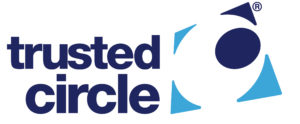The secrets of building a global technical team
Only this week, I was kindly asked to speak at an event for a major retailer about my experience of building and leading a global technical team. My journey started in 2005 when we were trying to make a case to open a small number of overseas technical offices to support the day to day technical activities of quality, ethical standards, factory quality assurance systems, finding new suppliers …. etc. Little did I know that 10 years later I would be the Director of Technology & Sourcing leading eight sourcing offices around the world!
Outlined below are the key challenges, watch outs and opportunities when building or evolving a global technical team:
Positivity – each member of the UK technical team must believe that a global technical team is stronger, for the business, than a UK centric team. For any chance of success negative chatter must stop – “it will never work, can we trust our overseas teams? who’s fault is it if it goes wrong?…” etc. Just remember there is no such thing as a perfect world – things will go wrong and there will never be total clarity in modern businesses.
Keep it Simple – you can process map until the cows come home and try writing down who performs each task and who’s accountable for every part of the process across every product. I would suggest it is impossible to write down every eventuality. Instead have simple guiding principles around a few key processes. For example, for a brand where quality is important the guiding principle might be – the UK teams develop, agree and sign off product specifications and the sourcing teams ensure the product is manufactured to those standards.
Focus on what’s important– the business should have one strategy. Everyone, particularly the overseas team should understand the key priorities. If you understand the big picture then local decision making and work load prioritisation becomes easier. Unfortunately, the overseas teams can become out of touch for no fault of their own; UK teams must constantly update the overseas teams of business strategy and priorities.
Don’t be a maverick– the business needs one way of working with a few common-sense variations, not 51. If you do your own thing, the suppliers and sourcing offices will get totally confused as they often work across multiple departments and industries. Their job is hard enough as it is without trying to operate across multiple buying processes.
Play in position – UK teams should be customer focussed, developing excellent products, looking at the competition and driving innovation. The overseas teams should be focused on manufacturing excellence, ensuring company policies and standards are met around ethics, chemicals, safety …etc. The UK teams must stop being control freaks and let go of certain activities!
Be one team – don’t slag off your colleagues as the suppliers will have a field day and play divide and conquer. It’s very easy to blame a sourcing office or the UK team and suggest that you would have made a different decision. Don’t undermine each other!
Clear communication– UK teams must be very clear with what they want as some cultures will literally do exactly what you’ve said and will not interpret information. Overseas teams do not need to write two pages when all they are trying to say is “I’ve rejected the fabric for poor colour fastness”. Feedback of good and poor communication as it happens should take place.
Keep travelling– avoid the dangerous binary conversation around overlap and duplication. Teams must travel to continue to seek out opportunities, build strong relationships …etc
Grasp the opportunity– if you are lucky enough to work for an organisation that has taken the brave decision to invest in a global technical team then make it work. For the UK technical teams, this is your chance to do all the things you want to do, which is really about focussing on the customer.
KRISHAN HUNDAL




Leave a Reply
Want to join the discussion?Feel free to contribute!